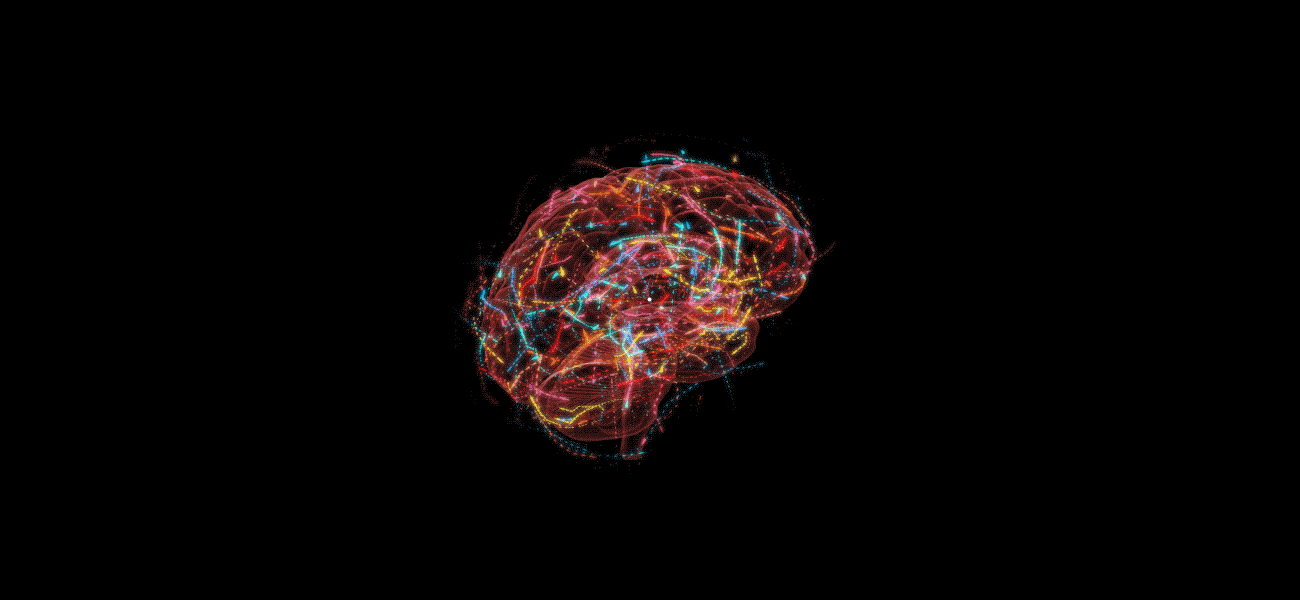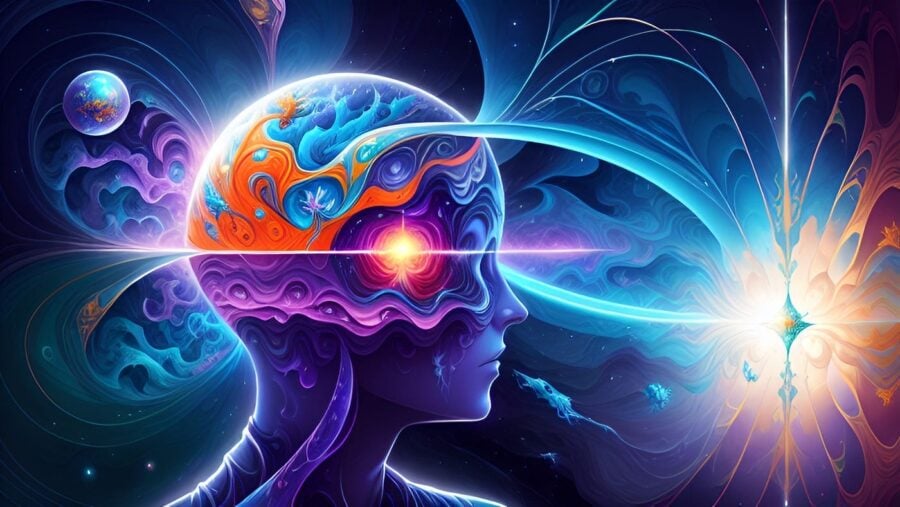How does the brain create consciousness? Thirty years ago, David Chalmers called this the Hard Problem, and the name has stuck.
In the paradigm of reductionist science, there are only physical matter and physical causes. There is no need for emotions or sensations or intentions — indeed, there is no room for these things, because physical causes (together with quantum randomness) are believed to explain everything.
Why, then, do we have a subjective life? We could conceive a world in which living beings evolved complex neural circuits to safeguard their bodies and advance their reproduction, but there was “no one home”, no one to sense pain or pleasure or to consciously process information.
The Hard Problem is usually framed as, “what processes in the brain create the subjective impression of a ‘self’?” A popular topic today is whether computers might perform the same processes, so that they will become conscious.
Some philosophers have reinterpreted the Hard Problem to ask a more approachable question: Why are some of the brain’s processes accompanied by subjective awareness and others take place off-stage? Others have proposed that consciousness is in a different realm from physical matter, and thus a resolution of the Hard Problem is not a logical possibility. This is Cartesian dualism, and it is part of the perspective I am bringing to the table here.
I believe there is another approach that offers a full resolution and does not lead to a logical cul-de-sac. Furthermore, it is embraced by people who know some physics: Bernardo Kastrup, Amit Goswami, Vandana Shiva, Josh Mitteldorf. Last month I wrote about Henry Stapp, a Berkeley physics prof who studied with Pauli and von Neumann. Many science historians quote the luminary fathers of quantum mechanics as advocates for this view — Max Planck, Niels Bohr, Werner Heisenberg, Erwin Schrödinger, John von Neumann and, in a later day, Wigner and Bohm.
A considerable virtue of this approach is that it transports the Hard Problem into a realm where there is real empirical support, and potential for a further experimental program.
We should invert the question: How does consciousness create the brain? The hypothesis is that consciousness is a fundamental reality, more fundamental than space, time, and matter. (Consciousness is, after all, what we know most directly.) We can explore the possibility that consciousness created the physical world as a playground for itself, and created life and then brains to explore that playground from many different perspectives.
There are four findings from mainstream science that lend support to this paradigm:
- Quantum mechanics seems to need something outside its physical framework which accounts for discontinuities in the physical wave function whenever an observation is made. (This is called the “measurement problem”.)
- Robert Jahn and Brenda Dunne, working in the Princeton Engineering Dept in the 1980s and ’90s, meticulously documented that pure thought — intention that exists only in someone’s mind — can load the dice of quantum probabilities from a distance. Other experiments and anecdotes support the power of the mind to affect physical reality directly.
- In 2004, Johnjoe McFadden outlined a theory of Quantum Evolution, in which consciousness works through a strange but well-documented quantum effect to enhance the probability of the tiny mutational changes that have been so crucial to evolution of life on earth.
- The most fundamental laws of physics are taken as an irreducible foundation for science. They just are what they are. For much of the 19th and 20th centuries, scientists thought that life was an opportunist, taking the arbitrary laws as given, and finding ways to craft self-reproducing machines that we call living cells. But we now know that not just any laws of physics can support life. In fact, if the laws of physics were just a little different in any of a dozen ways, life would be impossible.
Here in Part 1, I will explain #1 and #2. Next week, in Part 2, I will present #3 and #4, and then propose some experiments that might support or falsify this paradigm.
“It was not possible to formulate the laws of quantum mechanics in a fully consistent way without reference to consciousness.” — Eugene Wigner, Nobel Laureate in physics
“I regard matter as derivative from consciousness. We cannot get behind consciousness. Everything that we talk about, everything that we regard as existing, postulates consciousness.” — Max Planck, another Nobel physicist
Schrödinger’s formulation of quantum mechanics was based on a wave function as the primary reality. The dynamics of the world is explained as evolution of the wave function, and Schrödinger’s equation describes how the wave function changes from moment to moment. Schrödinger’s equation and his wave function were appreciated and accepted for many months based on the fact that they correctly predicted the spectrum of the hydrogen atom. But what did the wave function mean? How did it relate to anything that can be measured in the laboratory?
It was Max Born who proposed the answer that is still accepted today. He said that the wave function can be evaluated at a particular point, or for a particular configuration, and the square of the wave function then tells you the probability of observing that position or that configuration. Where the wave function is large, the probability of finding the particle is high. “Finding the particle” is a measurement, and the word means what you think it means, but it also has a special significance in quantum theory.
As long as a system is not being measured, it continues to hum along in a way described by Schrödinger’s equation. But at the moment a measurement is made, the wave function “collapses”. Schrödinger’s equation ceases to be applicable, and instead the system’s new wave function is described with all the probability stacked up in one place—after all, you can no longer speak of probabilities when you know 100% what was the result of the measurement.
But what’s so special about a measurement? How can we tell definitively when the world is governed by Schrödinger’s equation and when it abruptly changes its state? Whatever the measuring apparatus is, isn’t it made of physical matter? So it has its own Schrödinger equation and its own probability function. If we think in this way, the system and the measuring apparatus can be regarded as one system, and that system has its own big wave function. That big wave function doesn’t collapse, just because we name its operation a “measurement”.
Quantum physics needs this “wave function collapse” so that it can bridge the gap between the abstraction of a “wave function” which is its supposed ground-level physical reality, and the observations that are the subject of both common experience and experimental science.
But whatever collapses the wave function cannot be part of the world that is described by the Schrödinger equation, which is to say that it cannot be physical. This is what led Schrödinger and Heisenberg and von Neumann to think it logical to identify wave function collapse as a mental event, outside of space, time and matter.
Many physicists don’t like the idea that there is a mental reality separate from physical reality, and they have found many ways to weasel out of this conclusion; Some involve “decoherence”. They say a measurement is a kind of interaction with so many random particles that you no longer have a wave function any more. Others say that quantum mechanics requires a classical world, an old style world of Newtonian physics. It is the transition from the quantum realm to the classical that constitutes a “measurement.” A third view is the “many worlds” interpretation, in which the word “many” is a hyper-astronomical understatement. They say that every time anything interacts with anything else, the world splits in two, so there are unimaginably many universes, where every possible combination of things that can happen are all given a chance to play out.
Along with many (but not most) physicists, I believe it is mind that collapses the wave function. John von Neumann was the earliest and most prominent supporter of this view, and he wrote about it quite explicitly in his classic quantum text. He was one of the brilliant minds of the second generation of quantum physicists in mid twentieth century. His logic was simple. If it’s just physics, no matter whether it’s coherent or incoherent, known or unknown, random or tightly controlled — so long as it’s physical matter, it is governed by Schrödinger’s equation. So if the wave function is known to change abruptly during a “measurement” in a way that is not governed by the Schrödinger equation, why then the “measurement” must involve something outside of physical matter. The obvious “something” is us — the conscious mind of the observer. Von Neumann’s idea was that a “measurement” involves a conscious being learning something new. Collapse of the wave function is essentially an interaction between mind and matter.
Von Neumann was the first to formulate this idea in terms of the new quantum theory, but the notion that this spark of awareness inside each of us is something outside and separate from physical matter goes all the way back to Pythagoras and to Plato. In the 17th century, Descartes wrote about a world of matter and a world of spirit (res extensa and res cognitans). In the 18th century, Leibniz spoke of monads, which are not reality but perspectives from which reality is viewed. At the end of the 19th century, William James wrote of consciousness as having an enduring existence apart from matter, and the brain as a kind of transponder that connects an individual consciousness to a body made of matter, and the nervous system that controls it.
So we credit von Neumann with taking an ancient idea and giving it a sound foundation in terms of 20th century physics.

According to classical quantum mechanics of Schrödinger and Heisenberg and even von Neumann, the wave function tells you all that can be known about a situation. No better guess can be made than the probability computed as the square of the wave function.
In the 1970s, Robert Jahn was Dean of Engineering at Princeton University. He designed rocket engines, and headed a prestigious and highly productive laboratory. In his training and in his belief system, there was no need for a res cognitans with a separate existence apart from the physical world.
The first crack in his paradigm came when one of his students turned in her own findings from a project on telepathy. Crucially, Dr Jahn believed that experience and empirical data were the last word in science, and he was open to considering the students’ data even when they contradicted the very foundations of the science that he had relied on successfully through decades of engineering.
Robert Jahn was curious enough to replicate the student’s experiment with his own strict controls, and after seeing the positive results with his own eyes, he embarked on a 28-year investigation into the paranormal. The PEAR lab was a joint project of Jahn with Roger Nelson, and Brenda Dunne, who moved to Princeton from University of Chicago, where she was already engaged in parapsychological research.
Jahn designed the protocols with bulletproof methodology and Jahn performed the statistical analysis in the most conservative interpretation. Dunne ran the laboratory from day to day, creating a warm and welcoming environment that encouraged experimental subjects to relax and believe that they had psychic powers. Her intuitions provided the crucial soft support to Jahn’s rigorous scientific controls.
The flagship experiment of the PEAR lab looked for direct effect of mental intention on quantum probabilities. A device turned quantum noise into numbers that could be displayed on a screen, and experimental subjects were asked simply to make the numbers go higher or lower. Over 28 years, over many billions of quantum measurements, about one bit in 10,000 was flipped by the power of human intention, without contact or any physical connection to the apparatus. The probability of this being a chance fluke got lower as data accumulated with each passing year. By the end, the statistical significance was on the order of 0.000001, roughly the threshold for announcing the discovery of the Higgs Boson at the CERN laboratory.
Others, including Dean Radin, have replicated the findings of Jahn and Dunne. What quantum mechanics regards as “irreducible randomness” can actually be influenced directly by the private thoughts of a person who engages enough to care, with no physical connection to the quantum system.
This finding is certainly seminal, but you might ask: what does it have to do with the relationship between mind and brain? At minimum, it makes plausible the idea that mind does not require a physical substrate, that conscious awareness has an existence independent of any brain. In addition, it might lend support to the (ancient) notion that there is a soul, a disembodied consciousness, that takes up residence in a physical body.
Evidence that the brain is a quantum system, potentially controllable by a mind that biases quantum probabilities
The experiments of Jahn and Dunne established that mind in the abstract can affect quantum probabilities. When a person sits in front of a screen, asked to play with a quantum number generator, she has little at stake, so there is little connection between her intention and the quantum probabilities she was asked to influence. It is a plausible extrapolation to imagine that mind can have a much larger influence on quantum probabilities when a mind takes up residence in a brain — in religious language, when a soul incarnates as a human or other physical, living form.
Perhaps everything that quantum mechanics considers to be “random” is actually the mental realm. When no living mind has a stake in the outcome, quantum events can appear random. When a human sits in front of a computer monitor and plays with the power of his mind, the results depart slightly from random. But pivotal events that define history may be subject to psychic influence, and within a living brain, the power of mind to shape quantum events may be at a maximum.
Kaufmann and Radin cite preliminary evidence that the brain is just the sort of system that might be sensitive to quantum events, amplifying them into thoughts or nerve impulses linked to muscle activity.
Is the brain a computer? Computers are engineered to be reliable. The program must return the same result each time you run it, so it is not acceptable for the randomness inherent in quantum mechanics to creep into the computer’s switches. In fact, as transistors are miniaturized so that more can be printed onto a chip, they approach a size where quantum effects make them inherently unreliable. As I write this in 2024, commercial computer chips have ~100 billion transistors, and each transistor is about 100 atoms across. The operation of each transistor aggregates enough quantum events that the overall result is highly reliable. Silicon engineers are profoundly aware of the necessity of keeping the computing elements large enough to be reliable. If the brain is a computing engine that creates consciousness by its computations, we would expect the architecture of the brain also to be such as to avoid amplifying effects of quantum randomness.

Are brains also “engineered” to compute reliably, insulated by size from random quantum events? Stuart Kauffman has cited evidence that neurotransmitters in the brain are just the opposite of reliable. They are poised on a quantum knife-edge easily flopping to one side or the other, a bit value of 1 or a 0. It is plausible that the firing of a neuron is a quantum event. If this is a bug in evolution’s design, then brains are far less reliable and accurate than they might be. I prefer to think that this is a feature, not a bug. Nerve connections are not vulnerable to random interference; rather they are open to influence by the mind’s intentions.
This is the result of one study, based on one interpretation of neurotransmitter molecular structure. More detailed examination of the architecture and chemistry of the brain might confirm or falsify the idea that the brain is not the creator of consciousness, but the connection that puts consciousness in touch with the physical body.
Next week, I will introduce (#3) a quantum phenomenon named for the Greek father of paradox, which provides a plausible mechanism whereby the observer (consciousness) might move the observed in a deliberate way. Then, I’ll go on to (#4) the Anthropic “Coincidences”, which can be interpreted (take your pick) either that our living universe has a gazillion dead sister universes with no one there to look at them, or else that our universe is the way it is because it was created as a 4-dimensional playground for consciousness. Finally, I want to propose experiments that might distinguish between brain-makes-consciousness and consciousness-makes-the-brain.
END of PART ONE


